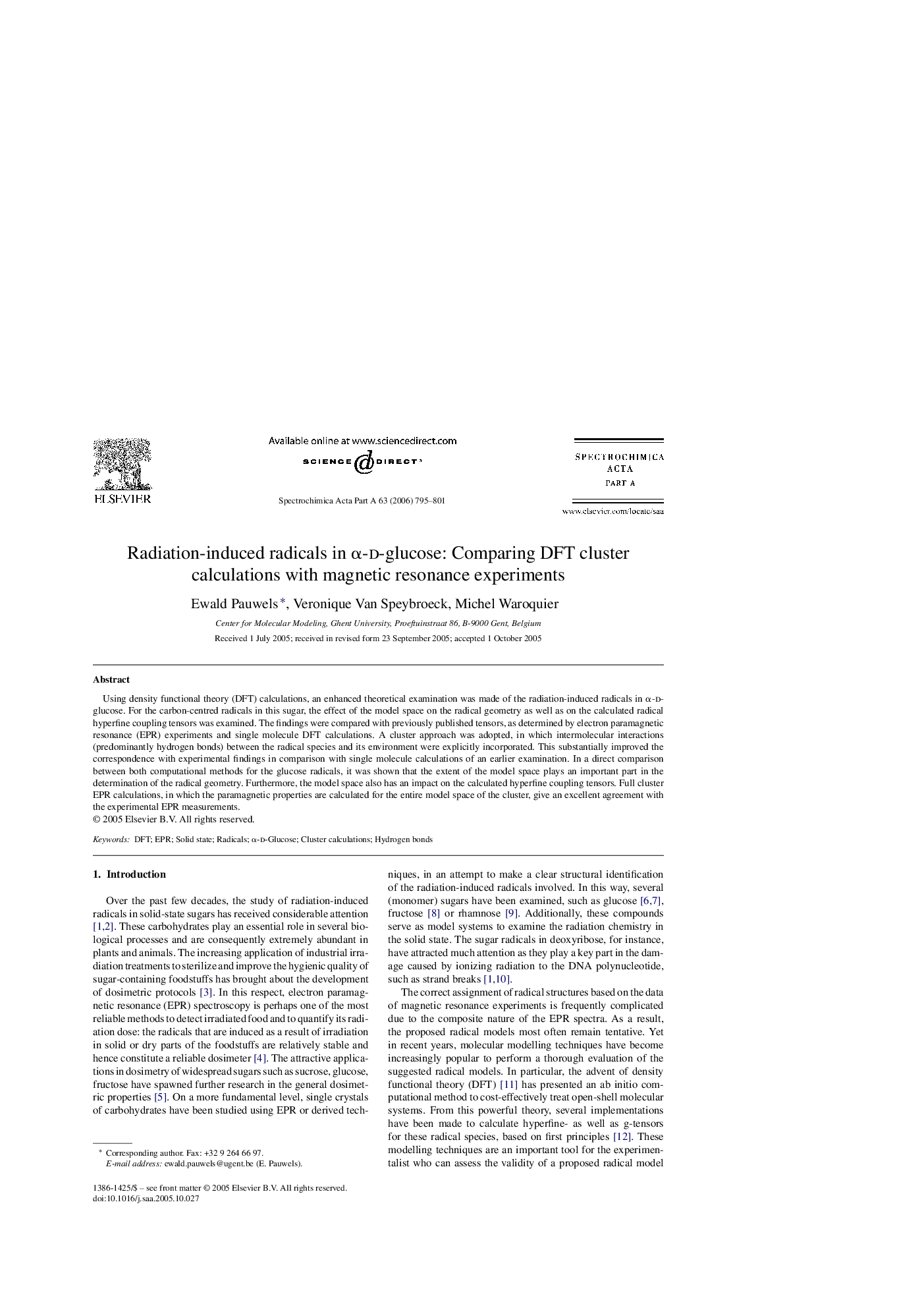| Article ID | Journal | Published Year | Pages | File Type |
|---|---|---|---|---|
| 1235741 | Spectrochimica Acta Part A: Molecular and Biomolecular Spectroscopy | 2006 | 7 Pages |
Using density functional theory (DFT) calculations, an enhanced theoretical examination was made of the radiation-induced radicals in α-d-glucose. For the carbon-centred radicals in this sugar, the effect of the model space on the radical geometry as well as on the calculated radical hyperfine coupling tensors was examined. The findings were compared with previously published tensors, as determined by electron paramagnetic resonance (EPR) experiments and single molecule DFT calculations. A cluster approach was adopted, in which intermolecular interactions (predominantly hydrogen bonds) between the radical species and its environment were explicitly incorporated. This substantially improved the correspondence with experimental findings in comparison with single molecule calculations of an earlier examination. In a direct comparison between both computational methods for the glucose radicals, it was shown that the extent of the model space plays an important part in the determination of the radical geometry. Furthermore, the model space also has an impact on the calculated hyperfine coupling tensors. Full cluster EPR calculations, in which the paramagnetic properties are calculated for the entire model space of the cluster, give an excellent agreement with the experimental EPR measurements.
